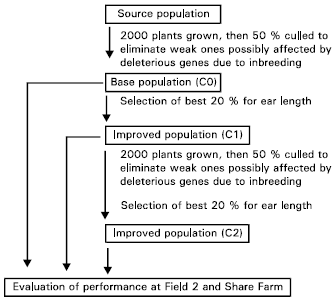Research Article
Response of Two Cycles of Phenotypic Mass Selection and Heritability on Two Tropical Sweet Corn (Zea mays L. saccharata) Populations
Department of Crop Science, Universiti Putra Malaysia, 43400- UPM, Serdang, Selangor, Malaysia
Ghizan B. Saleh
Department of Crop Science, Universiti Putra Malaysia, 43400- UPM, Serdang, Selangor, Malaysia














